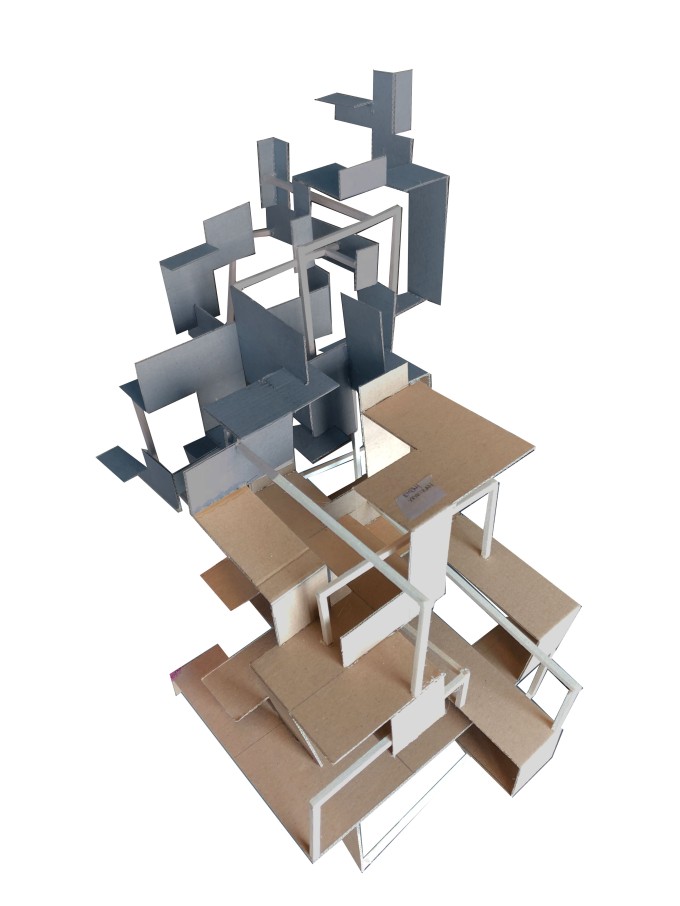We eventually had our final jury before New Year’s which followed by the colloquium this week. Now that we are all done with it, we can rest ourselves a bit and get freshened for the next semester. But before I do that allow me to brief you about how our final juries conducted.
Different from previous semesters we were assembled together in to 5 groups. Each group member has 3 minutes to talk about their work in their own group. Once it is finished we walk around to review all the works in a fast pace and prepare questions for the Q&A section.
The trick is that at the end we suppose to make peer evaluation of works in our group and give grades to each other.
I have submitted a construct which has around 50×50 cm2 volume along with its orthographic set. Unfortunately I couldn’t finish the axonometric drawing of my model due to the lack of time. (I’ll share my drawings on the next post “Poster design”.) I was at a point where decision had to be made regarding either I supposed to build my clean cut model or do the axonometric drawing. Obviously, I couldn’t afford to submit a worn out model.
As I have mentioned in my previous post (Taste of a Pre Jury) I received few constructive critiques and tried my best to apply all of them as long as my time allowed me to do so.
My construct changed drastically. One area of my construct literally composed of specific design operation of tear and fold along with some scale and stretch. I aimed to increase the variation of relationships by diversifying these tactics to better serve my design idea. My design ideas were Homogeneous vs. Heterogeneous. On the contrary, opposing part of my construct I tried to keep these variations on a constant level. I tried to reduce the movement which design tactics caused. Instead I applied a stretch operation most commonly but tried to show it in a pattern. This pattern perhaps visualized more clear on my diagram although it is an abstract medium. The pattern stretched elements has that they actually interwoven yet, there are no patterns I intentionally create on the opposing part of the model.
In addition, my target was to create differentiation between two parts by the arrangement of the elements as they are positioned in a linear way but in one part elements elevated along z axis where on another part of design concept they move opposite direction on z axis. I think I have achieved that aim because it looks from different angles that my elements gradually changing from small to large in terms of proportion.
As regards to my linear elements (sticks) for instance, I created a pattern where one sequence of relations repeats itself although they are not identical in terms of proportions. Yet, on my heterogeneous concept linear elements don’t follow a particular rule but in fact arbitrarily they extent to various directions.

During the colloquium guest instructors came to visit but before that they were briefed about the assignments we have studied since the beginning of the semester and got familiar with things we created and explored in the studio. Later, it was held like an open discussion between the groups where each group has one or two guest instructors. After we finished the discussions and when our guests left we started our own colloquium and critiqued the things we did throughout the semester with its pros and cons.
Overall it was very productive and successful semester for all of us. I’d like to thank all of our instructors for their patience and dedication on bearing with us against all odds that beginners of design may cause.





